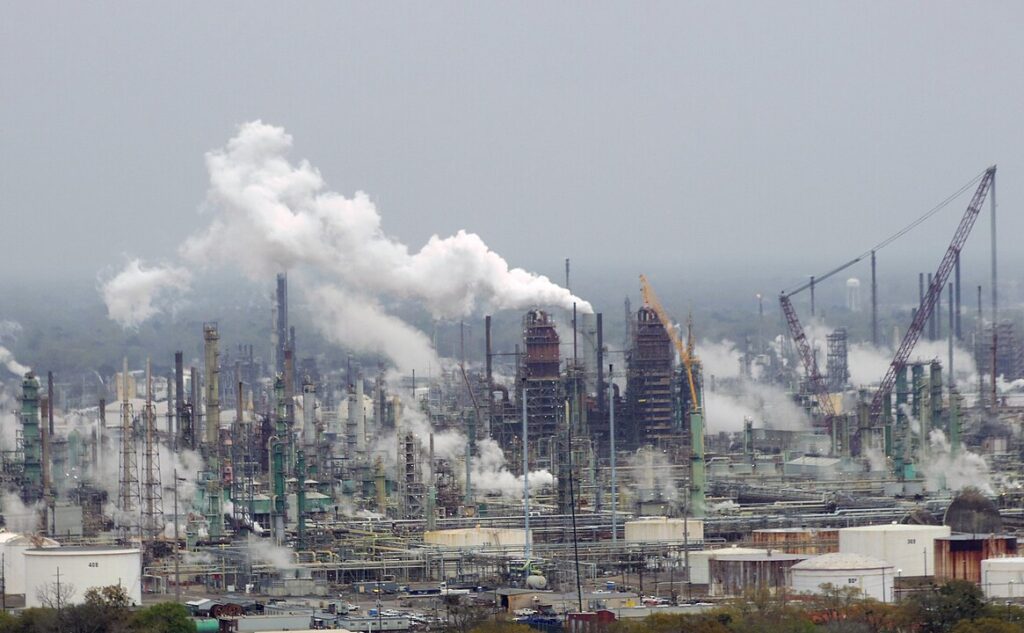
Summary
The ExxonMobil Baton Rouge Refinery, one of the largest refineries in the United States, has played a critical role in fuel and chemical production since its establishment in 1909. Located along the Mississippi River, this massive industrial complex spans thousands of acres and processes hundreds of thousands of barrels of crude oil daily. While the refinery has been a cornerstone of the local economy, it has also been associated with occupational hazards including the potential for asbestos exposure prior to the 1980s.
Detail
As one of the most significant oil refineries in the country, the Baton Rouge facility processes approximately 500,000 barrels of crude oil per day. The site includes multiple processing units, storage facilities, pipelines, and chemical plants, making it an integral part of ExxonMobil’s refining and petrochemical operations.
Throughout much of the 20th century, asbestos was widely used in industrial settings to insulate equipment, protect workers from extreme heat, and prevent fires. Up to the early 1980s, petroleum refineries commonly used asbestos insulation in steam pipelines, boilers, pumps, and refining units. Workers responsible for equipment maintenance, insulation installation, and demolition activities faced the highest risks of inhaling airborne asbestos fibers.
For more information on other Louisiana job sites where asbestos exposure may have occurred, visit our Louisiana Asbestos Job Sites page.
Address
ExxonMobil Baton Rouge Refinery
4045 Scenic Highway, Baton Rouge, Louisiana, USA
Exposure Information for Refinery Workers
Petroleum refineries prior to the mid 1980s posed potential asbestos exposure risks for employees working in the following areas:
- Boiler Rooms – Used asbestos insulation to contain high temperatures.
- Piping and Valves – Asbestos gaskets and insulation were common in high-heat areas.
- Distillation Units – Required fireproofing materials, often containing asbestos.
- Machinery Maintenance – Workers repairing pumps, turbines, and furnaces risked disturbing asbestos fibers.
- Demolition and Renovation Projects – Removal of aging asbestos-containing materials (ACMs) could release airborne fibers.
Contractors, pipefitters, insulators, and other skilled tradespeople who worked at the Baton Rouge Refinery, particularly before the 1980s, may have been at a heightened risk of exposure.
We Help Asbestos Exposure Victims Seek Justice
DuBose Law Firm has over 25 years of experience helping mesothelioma and asbestos lung cancer victims obtain justice for the workplace and environmental exposures that contributed to their disease.
We have successfully represented asbestos lung cancer victims from a wide range of trades, including but not limited to:
- Refinery workers
- Chemical plant workers
- Oilfield workers
- Pipefitters
- Welders
- Boilermakers
- Millwrights
- Insulators
- Shipyard workers
- Power plant workers
- Steel mill workers
- US Navy veterans
Additionally, we have represented individuals who developed asbestos-related illnesses due to secondary exposure, where a parent or spouse unknowingly brought asbestos dust home on their work clothes.
Depending on an individual’s exposure history, claims may be pursued against solvent defendants through the court system, as well as against various asbestos bankruptcy trusts. Even individuals who were smokers may have valid claims if they experienced occupational asbestos exposure.If you or a loved one has been diagnosed with lung cancer or mesothelioma, contact our office today for a free case evaluation. We’re here to help.
